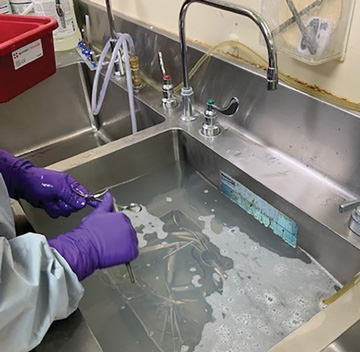No sterile processing department (SPD) manager wants to add another step to the complex and strategically redundant process of sterilizing surgical instruments. But wouldn’t you add that extra step if it provided absolute certainty that every instrument is returned to the OR free of bioburden?
That was our thought process when it came to implementing adenosine triphosphate (ATP) testing to validate that instruments are properly cleaned before being sterilized. Although we didn’t have an issue with bioburden or infection rates, we were running up to five surgical suites each day that performed cases in a range of specialties, including orthopedics, total joints, general surgery, otolaryngology, urology, obstetrics and gynecology. Because our SPD decontaminates and sterilizes such a wide range of instrumentation, ATP testing seemed like a worthwhile addition.
ATP testing, a bioluminescence technology that detects the presence of biologic material such as blood and tissue, uses premoistened swabs that are easy to use and provide results in less than 30 seconds. The rapid-result test reveals whether there is any presence of microscopic bioburden on an instrument and confirms the decontamination efficiency. Like all process improvements, seamlessly adding ATP testing into your workflow requires some flexibility and a lot of attention to detail.
.svg?sfvrsn=be606e78_3)

.svg?sfvrsn=56b2f850_5)